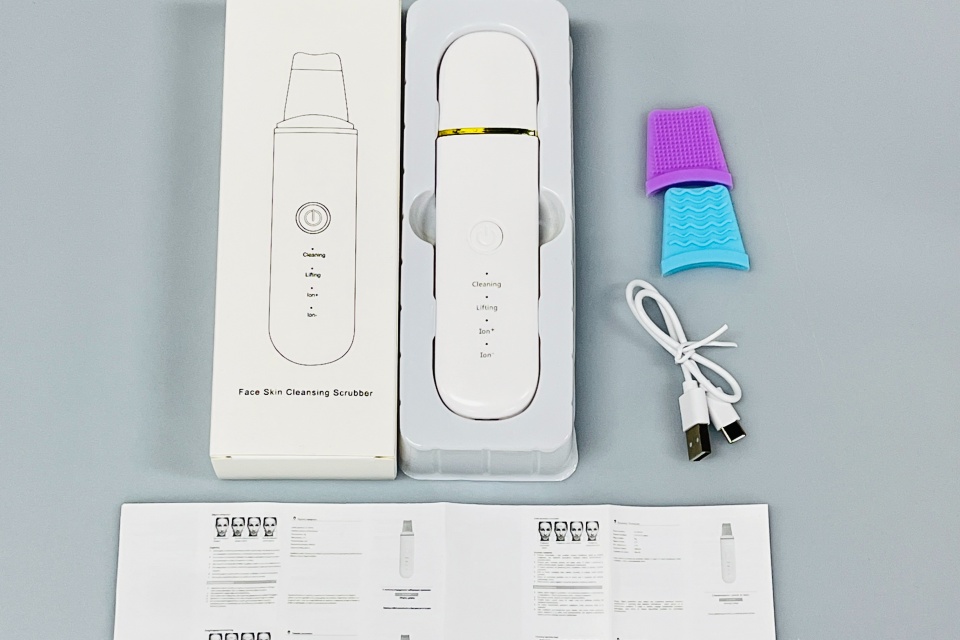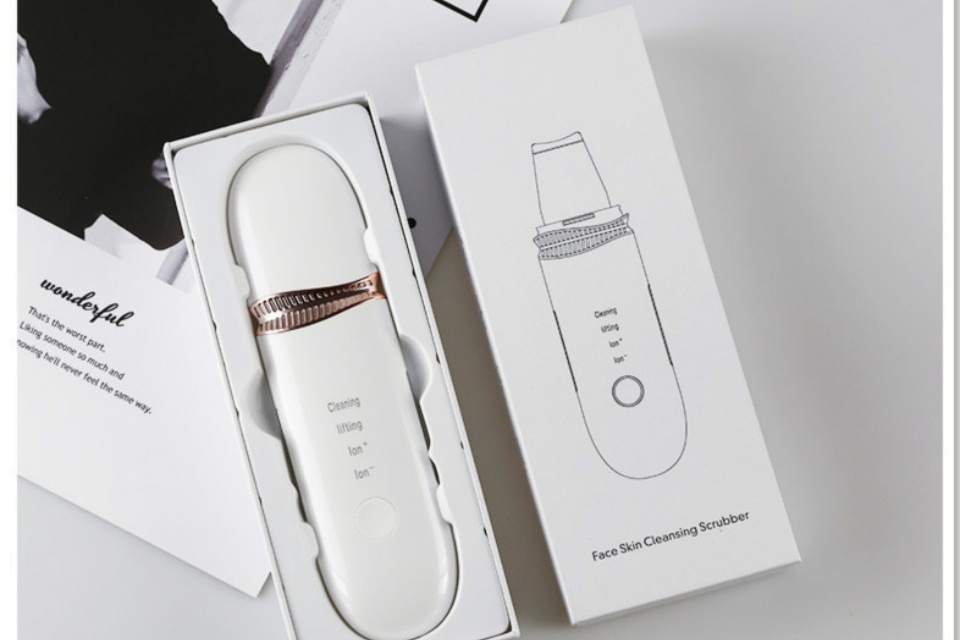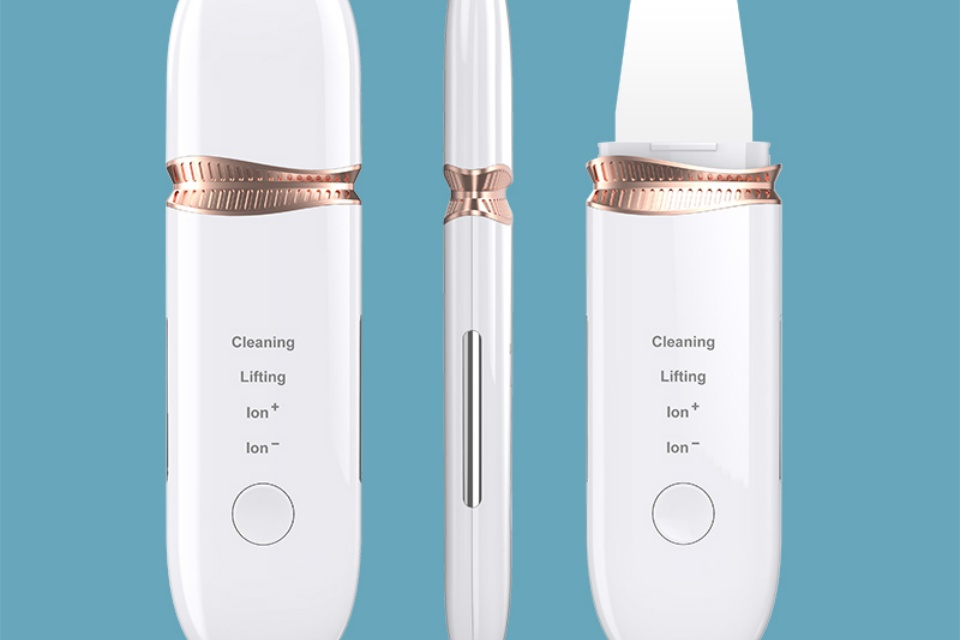Face Scrubber And Serum Combos For Texture Improvement
Summary
Face scrubber and serum combos for texture improvement refer to the synergistic use of exfoliating tools and concentrated skincare products designed to enhance skin texture and overall appearance. As skincare regimens increasingly emphasize the importance of proper exfoliation and targeted treatment, these combinations have gained popularity among individuals seeking smoother, clearer skin. By integrating mechanical scrubbers, such as cleansing brushes, with serums containing active ingredients like alpha-hydroxy acids (AHAs) and hyaluronic acid, users can achieve more effective results compared to using each product type in isolation.
The notable significance of face scrubber and serum combos lies in their ability to address various skin concerns, including dullness, uneven texture, and signs of aging. Mechanical scrubbers physically exfoliate the skin, while serums penetrate deeper to deliver concentrated nutrients and hydration, leading to improved skin clarity and texture. Additionally, the careful selection of these products allows for customization based on individual skin types and concerns, making them suitable for a wide audience.
Controversies surrounding these combos often center on the risks of over-exfoliation and the potential for skin irritation when using strong active ingredients simultaneously. Dermatologists advise caution when combining certain exfoliants and retinoids, as they can lead to increased sensitivity and adverse reactions, emphasizing the importance of understanding one's skin needs and tolerances before embarking on such a routine. Ultimately, when used correctly, face scrubber and serum combinations can significantly enhance the effectiveness of skincare regimens, promoting healthier, more radiant skin.
Types of Face Scrubbers
Facial scrubbers come in various forms, each designed to cater to different skin types and exfoliation needs. The primary categories include mechanical scrubbers and chemical exfoliants, as well as tools that enhance the exfoliation process.
Mechanical Scrubbers
Mechanical scrubbers utilize physical particles to slough off dead skin cells. These include traditional scrubs and devices like vibrating cleansing brushes. Mechanical scrubs are effective for achieving an instantly smooth complexion, but they must be used with care to avoid irritation. Many mechanical scrubs contain coarse exfoliating agents, such as crushed nut shells or fruit pits, which can be too harsh for facial skin if used excessively. It is essential to select scrubs with finer, gentler particles like jojoba beads or rice powder to prevent micro-tears and irritation.
Vibrating Cleansing Brushes
Vibrating cleansing brushes are modern tools designed to enhance the exfoliation process while ensuring gentleness. They come in various shapes and sizes and often feature different vibration settings to customize the intensity of the cleansing experience. Most brushes utilize soft silicone bristles or textured bristles for deeper exfoliation, making them suitable for sensitive skin types as well.
Chemical Exfoliants
Chemical exfoliants differ from mechanical scrubs by relying on active ingredients such as alpha-hydroxy acids (AHAs) or enzymes to dissolve dead skin cells. These exfoliants help to improve skin texture and promote a brighter complexion without the physical abrasion associated with mechanical scrubs. AHAs like glycolic acid and lactic acid are common in many formulations, while fruit enzymes are popular alternatives.
Combining Scrubs and Serums
To enhance the benefits of exfoliation, many users opt to pair scrubs with serums. Following a scrub, applying serums containing hydrating ingredients such as hyaluronic acid or soothing agents like aloe vera can help restore moisture and calm the skin. This combination not only improves texture but also promotes a healthy, radiant complexion.
By understanding the various types of face scrubbers and their unique benefits, individuals can better select the products and tools that suit their skincare needs. Regular use of appropriately formulated scrubs, whether mechanical or chemical, can lead to significant improvements in skin clarity and texture.
Types of Serums
Face serums are concentrated skincare products formulated to deliver potent active ingredients directly to the skin, targeting specific concerns such as hydration, aging signs, or hyperpigmentation. They come in various forms, including light emulsions, gels, water-based solutions, oils, or pressed balms, making them versatile additions to any skincare routine.
Exfoliating Serums
Exfoliating serums typically contain alpha-hydroxy acids (AHAs), such as glycolic acid, which help to dissolve dead skin cells and improve skin texture and tone. These serums can enhance the overall appearance of the skin by promoting cell turnover and unclogging pores, making them effective for achieving a smoother and more youthful complexion.
Hydrating Serums
Hydrating serums typically contain ingredients such as hyaluronic acid, a humectant that attracts and binds water, holding up to 1000 times its weight in moisture. These serums can provide lasting hydration and reduce the appearance of fine lines, especially when formulated with both low and high molecular weight hyaluronic acid. Serums designed for dry skin often combine hyaluronic acid with glycolic acid, enhancing hydration while gently exfoliating the skin.
Anti-Aging Serums
Anti-aging or pro-aging serums are formulated to minimize visible signs of aging, such as fine lines and wrinkles. Key active ingredients in these serums include retinoids, peptides, and antioxidants like vitamin C, which helps protect the skin from environmental stressors while stimulating collagen production. Clinical studies have shown that regular use of these serums can improve the appearance of fine lines, age spots, and skin texture.
Brightening Serums
Brightening serums often feature vitamin C and niacinamide as primary ingredients. Vitamin C is known for its antioxidant properties, which protect the skin and brighten its appearance, while niacinamide helps to improve skin tone and reduce hyperpigmentation. These serums are ideal for individuals looking to achieve a more radiant complexion.
Acne and Blemish-Control Serums
Serums targeting acne often incorporate ingredients like niacinamide, azelaic acid, and bakuchiol, which help to regulate sebum production, reduce redness, and improve the skin barrier. These formulations are particularly beneficial for acne-prone skin, providing hydration while addressing breakouts without clogging pores.
Benefits of Using Combos
Combining various skincare ingredients can enhance their efficacy, leading to improved skin texture and overall complexion. Understanding how different ingredients work together is crucial for optimizing skincare routines.
Exfoliating Acids and Their Benefits
Exfoliating acids, such as alpha-hydroxy acids (AHAs) and beta-hydroxy acids (BHAs), are known for their ability to dissolve dead skin cells, promoting cell turnover and revealing fresher skin underneath. When used in conjunction with serums containing potent actives, these acids can enhance the effectiveness of the products. For instance, glycolic acid paired with vitamin C can help eliminate dullness while allowing vitamin C to stimulate cell turnover, resulting in a brighter, more radiant complexion.
Complementary Ingredients
Certain combinations of ingredients can yield synergistic effects. Niacinamide, known for its anti-inflammatory properties, can be particularly beneficial for those who experience irritation from other actives like retinol. When used together, niacinamide can help mitigate side effects, making it easier for the skin to tolerate retinol, especially when niacinamide is used at lower concentrations of 10% or less. Similarly, glycolic acid and retinol can be beneficial when alternated in a regimen, as both promote skin rejuvenation without overwhelming the skin when used appropriately.
Achieving Enhanced Results
Using products with complementary actions allows for broader benefits. For example, the combination of AHAs and BHAs can reduce hyperpigmentation, manage oil production, and diminish fine lines when layered correctly. Additionally, products like The Ordinary's Peeling Solution, which features a combination of AHAs and BHAs, can significantly improve textural irregularities and dullness. By carefully selecting and layering these ingredients, users can create a customized regimen that targets multiple skin concerns effectively.
How to Choose the Right Combo
When selecting a face scrubber and serum combination for texture improvement, it is crucial to consider your skin type and specific concerns. Understanding your skin's needs will help you narrow down the most effective products.
Identify Your Skin Type
Identifying whether your skin is normal, oily, dry, or combination is the first step in choosing the right products. Different skin types require different formulations; for instance, those with oily skin may benefit from gel foaming textures, while dry skin types might prefer creamier cleansers. Additionally, if you have sensitive skin, opting for gentler formulas is essential to avoid irritation.
Choose the Right Exfoliation Method
Exfoliation is a key component in improving skin texture. While physical scrubs are available, dermatologists often recommend chemical exfoliants containing glycolic acid, lactic acid, or salicylic acid, as they can effectively remove dead skin cells without the risk of causing micro-tears associated with physical scrubbing. For instance, Paula’s Choice 2% BHA Liquid Exfoliant has been praised for its effectiveness in lifting away oils and grime, making it a popular choice among users.
Complement with Targeted Serums
After exfoliation, using a serum tailored to your skin’s specific needs can enhance results. Serums with niacinamide can help reduce redness and improve the skin barrier, while ingredients like azelaic acid address acne and pigmentation. For a comprehensive approach, consider a combination of ingredients that offers smoothing, plumping, and hydrating benefits, such as retinol and peptides, which work well for various skin types.
Maintain pH Balance
It is important to ensure your skincare routine maintains proper pH levels. Incorporating a toner or treatment lotion after cleansing and before applying serums can help balance pH, hydrate the skin, and prepare it for the active ingredients to follow. This step is crucial for soothing the skin and enhancing the effectiveness of subsequent products.
Regularly Assess Skin Needs
Lastly, regularly assess your skin's response to the products you use. Skin conditions such as eczema or acne may require adjustments to your routine, and consulting with a dermatologist can provide personalized guidance based on your specific needs. A well-considered approach to selecting face scrubber and serum combos will ultimately contribute to smoother, healthier skin texture.
Application Techniques
Proper application techniques are essential for maximizing the effectiveness of face scrubs and serums, especially when aiming to improve skin texture. The following guidelines will help ensure that you achieve the best results from your skincare routine.
Pre-Application Steps
Before applying any scrub or serum, it's crucial to start with a clean canvas. Always cleanse your skin to remove makeup, dirt, and impurities. Consider using warm steam or a warm compress to open up your pores, which can enhance the effectiveness of the subsequent treatments.
Face Scrub Application
When applying a face scrub, follow these steps for optimal results:
- Start with Clean Skin: Ensure your face is free from any makeup and dirt before exfoliating.
- Apply the Scrub: Use wet fingertips to evenly distribute the scrub over your face, avoiding sensitive areas like the eyes and mouth.
- Exfoliate Gently: Massage the scrub into your skin using circular motions for about 30 seconds to one minute, which helps to remove dead skin cells without causing irritation.
- Rinse Thoroughly: Use lukewarm water to completely rinse off the scrub, ensuring that no residue remains.
- Follow Up with Skincare: After exfoliating, it’s important to apply your favorite serums and moisturizers to lock in hydration and further enhance your skin's texture.
Serum Application
Following the scrub, applying a serum correctly can further target specific skin concerns:
- Choose the Right Serum: Select a serum that addresses your particular skin issues, such as hydration, brightening, or wrinkle reduction. A Vitamin C serum is a versatile option that offers antioxidant protection and brightening benefits.
- Apply in the Correct Order: Generally, serums should be applied after toning and before moisturizing. This allows the serum's active ingredients to penetrate the skin effectively.
- Use Gentle Motions: Apply the serum using gentle patting motions with your fingertips, which can enhance absorption and minimize irritation.
Frequency and Precautions
When it comes to using face scrubs, it is typically recommended to limit their use to once or twice a week, depending on your skin type and the intensity of the scrub. Always perform a patch test with new products to check for allergic reactions and adjust the frequency based on how your skin responds.
By following these application techniques, you can enhance the effectiveness of your face scrubs and serums, leading to improved skin texture and overall complexion health.
Popular Products
In the realm of skincare, face scrubs and serums play essential roles in enhancing skin texture and tone. Among the various options available, a few standout products have gained popularity for their effectiveness and user satisfaction.
Notable Face Scrubs
One of the most renowned face scrubs is the product formulated by Kate Somerville, often referred to as the “Hollywood 2-minute facial.” This scrub is designed for all skin types, excluding sensitive skin, and features key ingredients such as salicylic acid, lactic acid, silica, and plant enzymes. These components work together as both physical and chemical exfoliants, promoting an even skin tone and texture while also brightening the complexion. Additionally, the formula includes soothing antioxidants like aloe vera and vitamins A, C, and E, making it a favorite among celebrities and beauty enthusiasts alike.
Another popular choice is the Versed Day Maker Microcrystal Exfoliator, favored for its gentle approach. It contains microcrystals that provide mild exfoliation, making it suitable for sensitive skin types. Users appreciate its refreshing lemony scent, although some may find it lacks the deep scrubbing effect of more intense exfoliators.
Effective Serums
When it comes to serums that complement these face scrubs, products containing vitamin C are frequently recommended. Vitamin C serums are known for their brightening properties and ability to fight free radicals, thus promoting healthier-looking skin. They are often lightweight and formulated to penetrate deeply, targeting specific concerns like hydration, uneven pigmentation, and fine lines.
Additionally, serums formulated with alpha-hydroxy acids (AHAs) are another effective option. These ingredients help in dissolving dead skin cells, further enhancing the results of exfoliation from scrubs and improving overall skin texture.
Combining the right face scrub with a suitable serum can significantly elevate a skincare routine, leading to smoother, brighter skin that looks and feels revitalized.
Potential Risks and Side Effects
When using face scrubbers and serums for texture improvement, it is essential to be aware of potential risks and side effects associated with active ingredients commonly found in these products, such as glycolic acid and retinol.
Common Side Effects
The use of glycolic acid and retinol can lead to various short-term side effects, particularly for those with sensitive skin. Users may experience mild tingling, redness, and warmth following application, which can sometimes escalate to more severe reactions such as erythema, burning sensations, and facial swelling. Overuse of these exfoliating agents may also result in dryness and irritation.
Sun Sensitivity
Both glycolic acid and retinol can increase skin sensitivity to sunlight, making it crucial to apply sunscreen daily to mitigate the risk of sunburn and sun damage. This heightened sensitivity necessitates careful consideration of sun exposure, especially following the application of products containing these active ingredients.
Risk of Over-Exfoliation
While exfoliation is beneficial for improving skin texture, over-exfoliating can lead to adverse reactions, including redness, irritation, and compromised skin barrier function. It is recommended to limit exfoliation to no more than two to three times per week and to monitor skin responses closely.
Reactions to Combinations of Ingredients
Combining multiple active ingredients can result in irritation and reduced efficacy. For instance, using exfoliating acids alongside retinol can cause the skin to react negatively due to overstimulation of cell turnover. Similarly, mixing exfoliating acids with benzoyl peroxide or vitamin C may disrupt the skin's natural pH balance, leading to further irritation and potential damage to the moisture barrier.
Special Considerations
Individuals with pre-existing skin conditions, such as eczema, rosacea, or other inflammatory skin issues, should consult with a dermatologist before incorporating potent exfoliants or retinoids into their routine. Pregnant or nursing women are also advised to avoid these ingredients due to potential risks.
Guidelines for Safe Use
When incorporating face scrubbers and serums into your skincare routine, it is essential to follow certain guidelines to ensure safety and effectiveness.
General Precautions
To minimize risks and achieve optimal results, adhere to the following precautions:
- Moisturize and Hydrate: Regularly apply a high-quality moisturizer suited for your skin type. This practice helps replenish moisture and maintain the integrity of the skin barrier, thereby reducing the likelihood of dryness and peeling.
- Use Sun Protection: Apply a broad-spectrum sunscreen daily, reapplying as necessary, especially during prolonged sun exposure, to protect against increased risks of sun damage.
- Consult with a Dermatologist: If severe side effects occur or if your skin does not adjust over time, seek advice from a dermatologist, particularly for those with sensitive or reactive skin types.
Handling Severe Reactions
While using exfoliants, both chemical and physical types may cause adverse reactions if not used correctly:
- Chemical Exfoliants: These include alpha-hydroxy acids (AHAs) such as glycolic acid and lactic acid, and beta-hydroxy acids (BHAs) like salicylic acid. They function by breaking down the bonds holding dead skin cells together. It’s important to introduce these products gradually, starting once a week and increasing frequency as tolerated.
- Physical Exfoliants: These involve manual scrubbing with gentle substances. While effective, over-exfoliation can lead to skin irritation, redness, or sensitivity if used excessively or with too much pressure.
Product Usage Recommendations
When using both face scrubbers and serums, consider the following to enhance your routine:
- Order of Application: After cleansing, apply products from thinnest to thickest. This means using a watery toner before applying a thicker moisturizer or serum, which helps ensure better absorption.
- Combining Ingredients: Avoid using retinol and glycolic acid on the same day. Instead, use retinol at night and glycolic acid on alternate days to minimize the risk of irritation.
By following these guidelines, users can safely and effectively integrate face scrubbers and serums into their skincare routines, promoting healthier and improved skin texture.
 English
English Español
Español Português
Português Pусский
Pусский Français
Français Deutsch
Deutsch 日本語
日本語 한국어
한국어 Italiano
Italiano عربى
عربى


